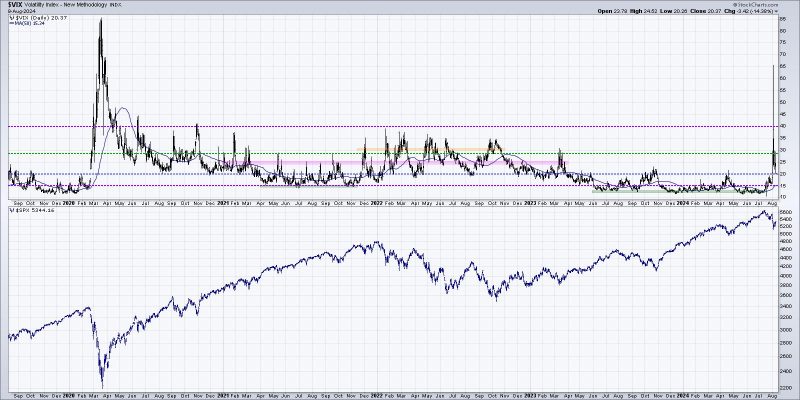Market sentiment indicators play a crucial role in understanding the prevailing mood and outlook of investors towards the market. By analyzing these indicators, traders and investors can gauge the overall sentiment and potentially anticipate market movements. In the current market scenario, three primary sentiment indicators are confirming a bearish phase, signaling a cautious approach for market participants.
1. **CBOE Volatility Index (VIX):**
The CBOE Volatility Index, also known as the VIX, is a widely tracked measure of market volatility and is often referred to as the fear gauge. High levels of VIX generally indicate increased market uncertainty and potential downside risk. Recent spikes in the VIX have signified growing concerns among investors regarding market stability and the possibility of a market decline. As the VIX climbs, investors tend to become more risk-averse, leading to selling pressure on equities and other risky assets.
2. **Put/Call Ratio:**
The put/call ratio is another important sentiment indicator that can provide insights into market sentiment. A high put/call ratio suggests that investors are buying more put options (bets on a market decline) relative to call options (bets on a market rise). An elevated put/call ratio is often interpreted as a sign of bearish sentiment, indicating that market participants are hedging against potential losses or speculating on a market downturn. The increasing demand for put options can lead to increased selling pressure on stocks, further exacerbating market declines.
3. **Investor Sentiment Surveys:**
Investor sentiment surveys, such as the American Association of Individual Investors (AAII) survey and the Investors Intelligence survey, provide valuable insights into the sentiment of individual investors and investment advisors. These surveys track the percentage of bullish, bearish, and neutral participants, offering a snapshot of market sentiment within these groups. In a bearish market phase, these surveys often show a higher percentage of bearish investors relative to bullish ones, reflecting a pessimistic outlook towards the market. Negative sentiment from both individual investors and professional advisors can contribute to selling pressure and market downturns.
In conclusion, monitoring market sentiment indicators is essential for traders and investors looking to navigate volatile market conditions effectively. The current confirmation of a bearish phase by key sentiment indicators highlights the importance of exercising caution and adopting risk management strategies in the current market environment. By staying informed and responsive to shifting market sentiment, market participants can position themselves to navigate market downturns and potential risks effectively.

